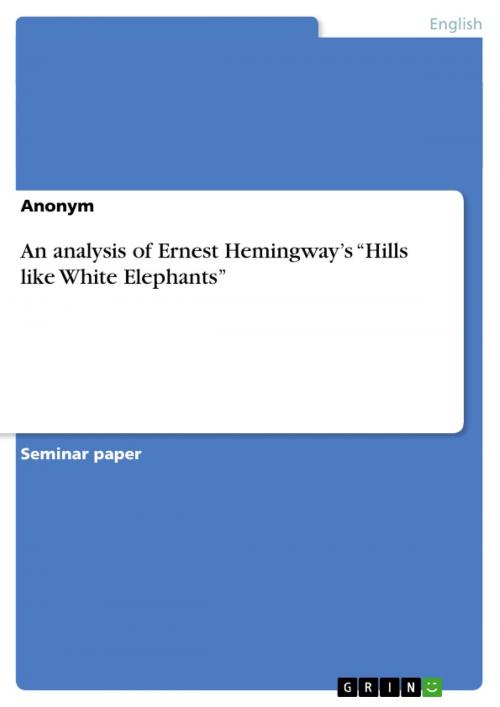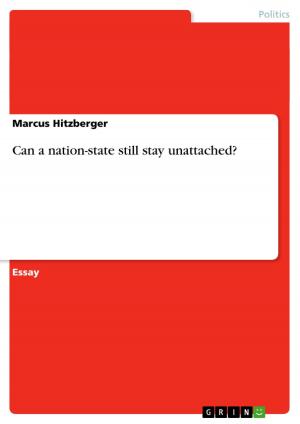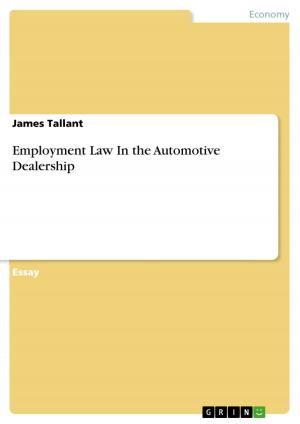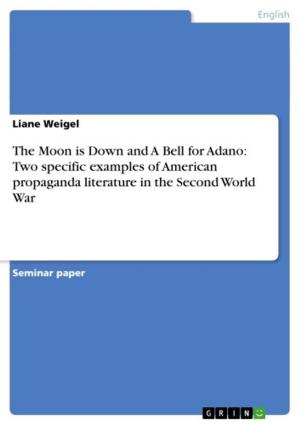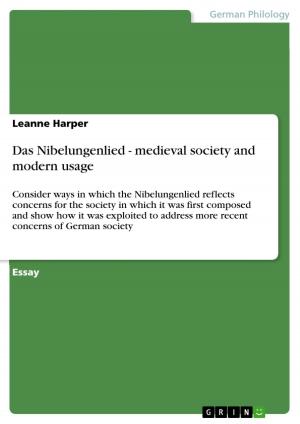An analysis of Ernest Hemingway's 'Hills like White Elephants'
Fiction & Literature, Literary Theory & Criticism, British| Author: | Anonymous | ISBN: | 9783640469185 |
| Publisher: | GRIN Publishing | Publication: | November 11, 2009 |
| Imprint: | GRIN Publishing | Language: | English |
| Author: | Anonymous |
| ISBN: | 9783640469185 |
| Publisher: | GRIN Publishing |
| Publication: | November 11, 2009 |
| Imprint: | GRIN Publishing |
| Language: | English |
Seminar paper from the year 2009 in the subject English Language and Literature Studies - Literature, grade: 1,0, University of Erfurt, course: The American Short Story, language: English, abstract: Can the reader of 'Hills like White Elephants' experience the success of the male character, known as 'the American', or the triumph of Jig, the female character, at the end of the story? The argument of the American couple waiting at a junction between Barcelona and Madrid represents the centre of Ernest Hemingway's short story. Heming-way published this short story as part of the story collection 'Men without Women' in 1927 (ANONYMOUS, 1996). Therefore, it can be assumed that the setting of the story is also conceived for the 1920ies. It is never directly mentioned that both discuss the abortion of their unborn child, although it becomes clear through implications within the text. Whereas the man tries to convince her in a manipulating manner to undergo surgery, she dreams of a future with the child (HEMINGWAY, 1956: 249ff). LAMB even states that: 'Much of the conversation is so obscure that on the literal level it can be comprehended only in light of the entire story' (LAMB, 1996: 469). Sev-eral metaphors, images and other literary devices, such as the simile being present in the title and in its several repetitions in the story, add to the reader's perception of the shown conflict. Apparently, the male character represents the dominant part in the relationship and the successful one in the conversation. As the girl states 'But I don't care about me. And I'll do it and then everything will be fine' (HEMINGWAY, 1956: 251) after being talked at by her boyfriend, it seems that she gives up and sac-rifices her wishes. However, scholars discuss whether the American or the girl can force their individual points in the end. The aim of this research paper is to examine this question. An analysis of the structure of the short story, the impor-tance of place and positioning as well as the language of both characters will support the clarification of the hypothesis mentioned above regarding the tri-umph of the man. Nevertheless, there could be another reading, too. Probably his female counterpart is more influential than it seems to be at first sight.
Seminar paper from the year 2009 in the subject English Language and Literature Studies - Literature, grade: 1,0, University of Erfurt, course: The American Short Story, language: English, abstract: Can the reader of 'Hills like White Elephants' experience the success of the male character, known as 'the American', or the triumph of Jig, the female character, at the end of the story? The argument of the American couple waiting at a junction between Barcelona and Madrid represents the centre of Ernest Hemingway's short story. Heming-way published this short story as part of the story collection 'Men without Women' in 1927 (ANONYMOUS, 1996). Therefore, it can be assumed that the setting of the story is also conceived for the 1920ies. It is never directly mentioned that both discuss the abortion of their unborn child, although it becomes clear through implications within the text. Whereas the man tries to convince her in a manipulating manner to undergo surgery, she dreams of a future with the child (HEMINGWAY, 1956: 249ff). LAMB even states that: 'Much of the conversation is so obscure that on the literal level it can be comprehended only in light of the entire story' (LAMB, 1996: 469). Sev-eral metaphors, images and other literary devices, such as the simile being present in the title and in its several repetitions in the story, add to the reader's perception of the shown conflict. Apparently, the male character represents the dominant part in the relationship and the successful one in the conversation. As the girl states 'But I don't care about me. And I'll do it and then everything will be fine' (HEMINGWAY, 1956: 251) after being talked at by her boyfriend, it seems that she gives up and sac-rifices her wishes. However, scholars discuss whether the American or the girl can force their individual points in the end. The aim of this research paper is to examine this question. An analysis of the structure of the short story, the impor-tance of place and positioning as well as the language of both characters will support the clarification of the hypothesis mentioned above regarding the tri-umph of the man. Nevertheless, there could be another reading, too. Probably his female counterpart is more influential than it seems to be at first sight.
